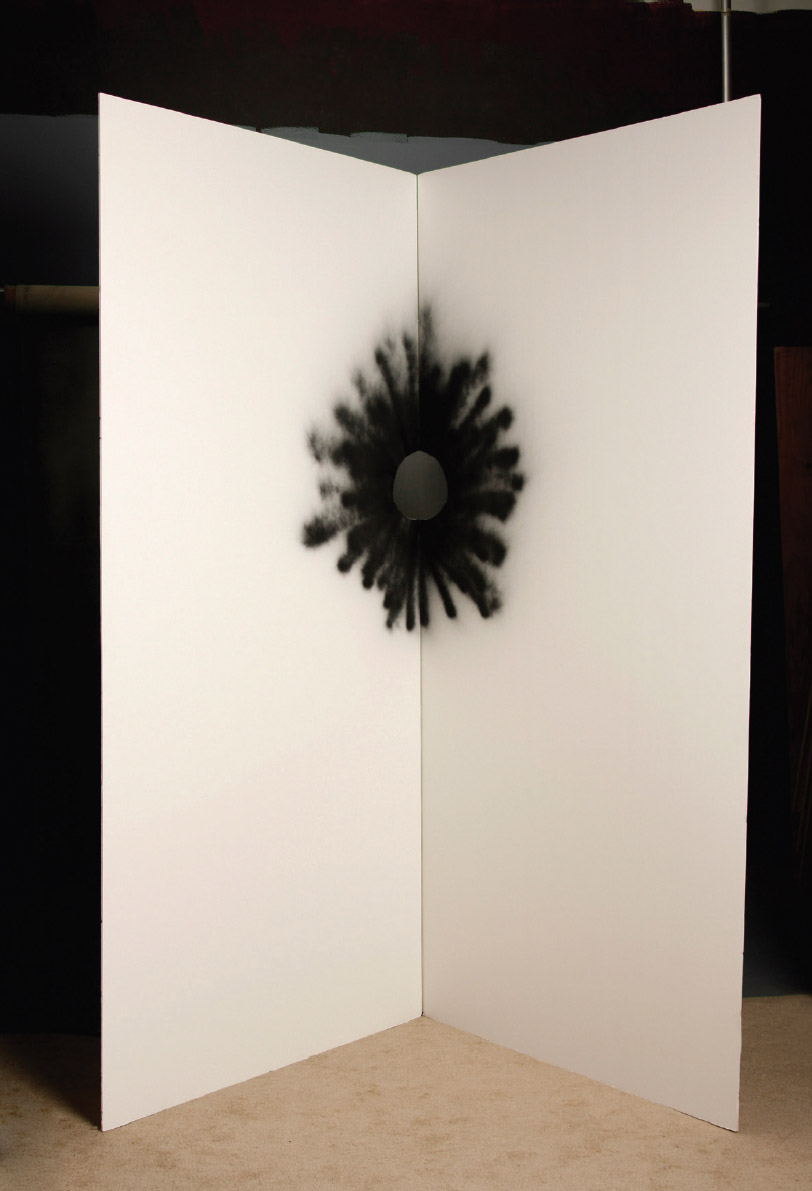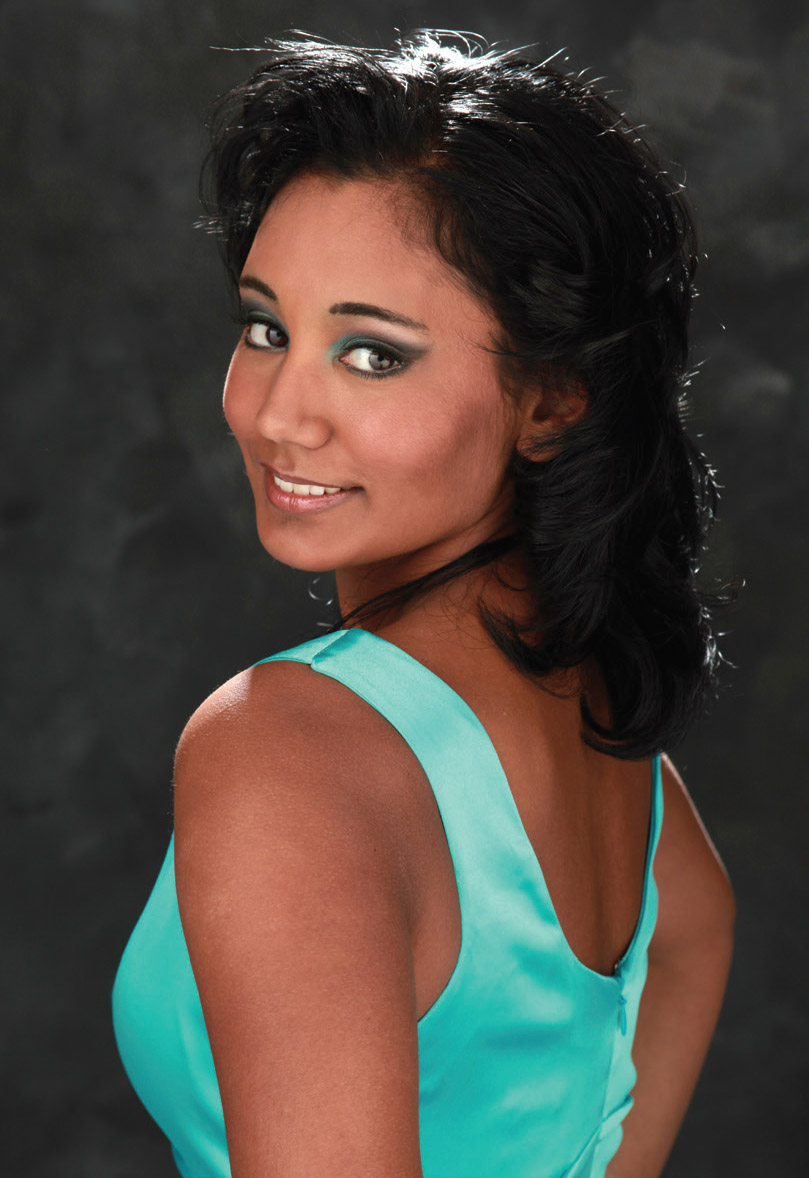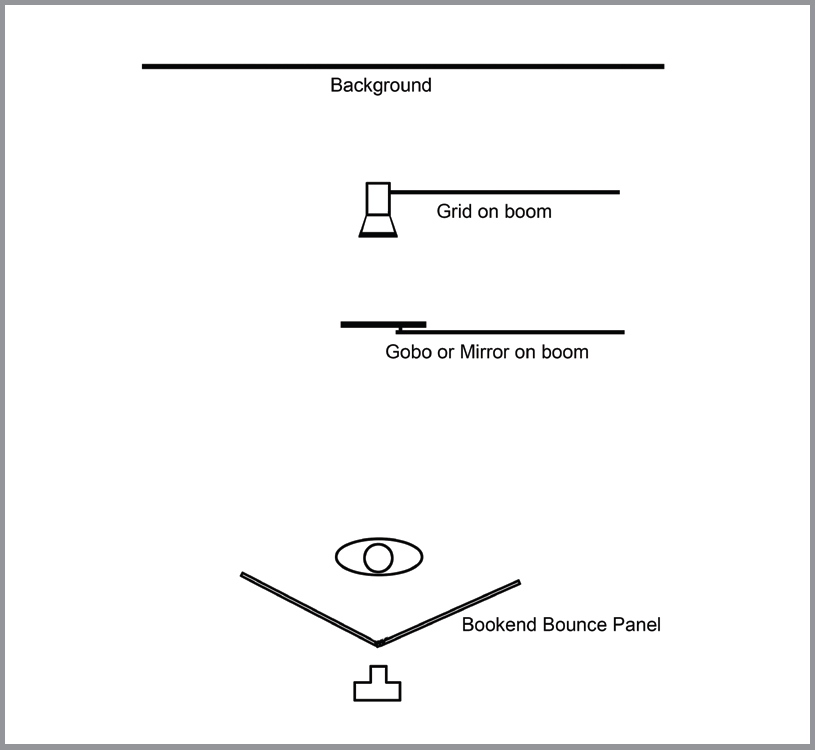A few years after I started writing books, I was given the opportunity to write a monthly column for an online adjunct to a physical school. It was great fun, but I did feel some anxiety as each month’s deadline loomed on the horizon.
I remember pacing the floor, wondering what I might write about, when I noticed a white bookend resting against a wall in the studio. I’d been thinking that light bounced off the bookend and onto a subject would look soft and beautiful, and I felt I could do that by shooting through an eye-level hole in the bookend. I’d also been thinking that I’d have to figure out a way to keep color in the subject’s eyes—especially the dark of the pupils. It took only a moment to realize that meeting those objectives would require nothing more complicated than adding a series of close, radiating lines of black paint around the camera hole. Without the lines, a subject’s eyes would reflect the white of the foamcore overall, presenting a “model of the living dead” appearance.
Understand also that I was looking for a way to make one light do the work of two, possibly three units, and the simple radiating paint solution suddenly put everything into play. I’ve written about this more than once, so if it sounds repetitious, I apologize. On the other hand, please accept my sincere thanks for reading my other books.
I couldn’t just hang a light on a boom arm over the subject and aim it at the hole, as it would hit the lens and flare terribly, washing out the image and lowering the contrast to an unacceptable level. I hung the first light on a boom and aimed it at the bookend, making sure it lit as much of the cards as possible, before clamping a chunk of cardboard to a second boom to block just enough light from the hole to avoid flare. I typically fit a 40-degree grid into the reflector to try to control light spill, but a full-on reflector will also work nicely.

The radiating black lines are the most important part of this cheap trick.



A relatively simple setup that produces stunning results.
I taped a 12×12-inch mirror tile to a nail plate and replaced the cardboard gobo with it, aiming it toward the background, angled like a diamond. The result was gorgeous; my subject’s hair took the brunt of the overexposure and blew out white in spots, while the reflection of the light from the mirror onto the background added about 1 f/stop to it. The light on her face, with the large catchlight and dark pupil, was soft and fabulous.
This effect is rather predictable because the light on the subject’s hair will be about 2 f/stops brighter than the light on the face and the background. Allowing for distance and falloff, the light on the hair will be about 1 f/stop brighter.
There are many perks to using foamcore bookends instead of secondary fill lights; this is yet another trick that will amp up your own work, and for cheap. You might need to make a joke about the voyeuristic nature of the shot, but the results will be worth any self-deprecating hit you might have to take. Trust me.